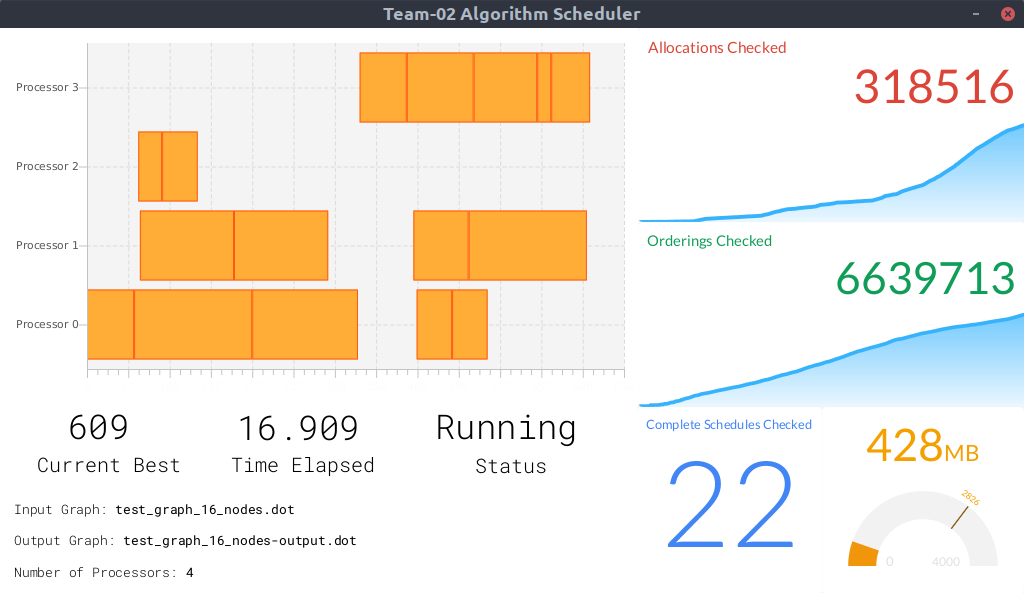This project aims to develop a fast algorithm to solve optimal task scheduling on multiple processors. We have implemented three different algorithms, DFS branch-and-bound, A* and a parallel version of DFS branch-and-bound. DFSBnB is typically used for its higher speed in testing and low memory usage. Parallel DFSBnB is used when multiple processors are specified by the user. These algorithms all run on a allocation-ordering (AO) search space. To find schedules, tasks are first allocated to a processor. Then, the tasks on each processor are ordered to form a valid schedule.
We are Team-02 (also known as Team 2).
| Name | UPI | Github Username |
|---|---|---|
| Liam Caldwell | lcal259 | ljcnz |
| Nisarag Bhatt | nbha702 | FocalChord |
| Timo van Veenendaal | tvan508 | timovv |
| Tony Liu | tliu818 | Minus20Five |
| William Li | wli213 | williamlixu |
| William Li | zli667 | TwelveHertz |
- Clone the repo:
https://github.com/timovv/306.git
- Import as Gradle project in Intellij (preferably enable auto-import)
- Install Lombok Intellij plugin
- Run the following Gradle task:
./gradlew generateGrammarSource
Or, just run ./gradlew assemble
To build an executable jar, run
./gradlew clean shadowJar
The jar will be placed in build/libs/.
To execute, just run java -jar <jarname.jar> [options...]
The appliation accepts a number of command-line parameters.
Usage: java -jar <project.jar> INPUT.dot P [OPTIONS]
INPUT.dot (A task graph with integer weights in dot format)
P (Number of processors to schedule the INPUT graph on.)
Optional:
-p N (Use N cores for execution in parallel (default is sequential).)
-v (Visualise the search.)
-o OUTPUT (Output file is named OUTPUT (default is INPUT-output.dot).)
 Running the program with the
Running the program with the -v flag enables the visualisation. The visulisation shows useful statistics as the algorithm is running, such as the number of allocations and orderings checked and the best schedule found so far.
